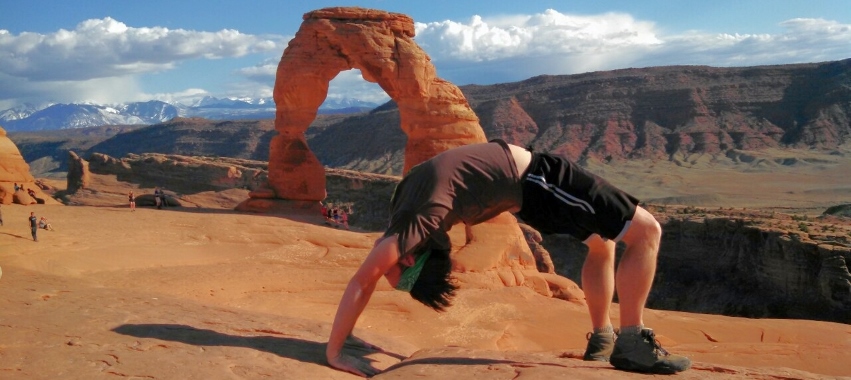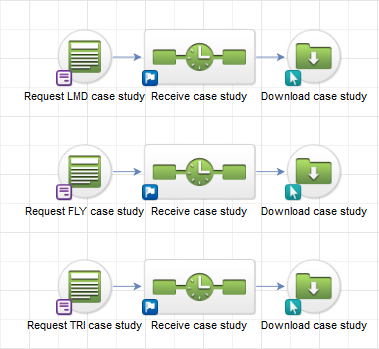It was two years ago this month that Bulbstorm was acquired, finally freeing me to set up shop as an independent marketing consultant.
I tried to escape the 9-to-5 world twice before. Both of those attempts blew up on the launch pad. I tried to start my own ASU sports magazine, but was runner-up for the booster club’s contract. Then I was set to become a freelance copywriter when Bulbstorm made me an offer I couldn’t refuse on my way out of Insight.
Two years into attempt my third attempt, this one seems to have reached orbit.
Yay!
I celebrated the anniversary as I celebrate most things – by traveling. Hey, after helping to organize the inaugural Phoenix Startup Week, I’d earned a vacation. So, I spent a week exploring the natural wonders of southeastern Utah.
Happy anniversary indeed!
The Way of the Solopreneur
I define solopreneur as anyone who runs his own business without intending to hire employees. There’s a lot to like about being a solopreneur. The most obvious benefit is that you’re the boss. You make the rules.
An overlooked benefit is just that. Benefits.
Corporate perks are one size fits all. A Friday afternoon beer cart. A discounted gym membership. Bagels and benefits. There’ll be some variability in health plans, but if you don’t have a pet then that pet insurance subsidy is useless.
As a solopreneur, you choose your own adventure. Maybe you want to work from home instead of an office. Maybe you prefer to work only with companies with a conscious mission. I truly believe that a solopreneur should get more out of it than just not having a boss. It’s too hard and too risky otherwise.
For me, being a solopreneur has been all about summers off and the ability to work for anyone I choose and from anywhere that has Wi-Fi. Did you know that there’s Wi-Fi in Yosemite National Park? Sure, I pay 100 percent of my health insurance costs. But, yeah, benefits rule.
(I wrote more about my life as a solopreneur – including how I decide what to charge, how many hours per week I work, and more – at Scott’s Marketplace.)
How long could it last?
I’m loving my new career. I’ve learned about PR for tech startups and sharpened my sales skills working with Ubiquity PR. I’ve implemented CRM and marketing automation solutions for a number of companies, from software startups to a car dealership. I’ve built a digital marketing program from scratch for a custom tile manufacturer.
And, yet, I wonder if and when my career as a solopreneur will end at the hands of opportunity. Two years after exiting Bulbstorm, I’m starting to get the itch to do another startup.
Six years ago, Bulbstorm found me by googling Phoenix Marketing Copywriter and landing on this website. When I initially turned them down to focus on my new copywriting business, the CEO trash talked me on Twitter. I couldn’t turn him down after that.
Is the end imminent? I doubt it. But, as I learned in my experience with Bulbstorm, you’re always one unexpected email from getting back in the game.




 Of course, a preference toward early adoption can give way to shiny object syndrome. It can distract time and budget away from programs that are already proven.
Of course, a preference toward early adoption can give way to shiny object syndrome. It can distract time and budget away from programs that are already proven.